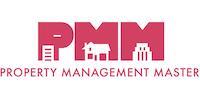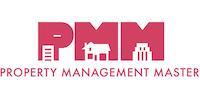Mastering the Move-Out: Essential Steps and Understanding Wear and Tear for a Stress-Free Transition

Moving out can be a stressful time for both property owners and tenants. However, with proper planning and understanding, the process can be smooth and hassle-free. Here are essential steps to ensure a smooth move-out process:
Organize Proper Documentation
Proper documentation is crucial for an easy transition. Keep the following records:
- Condition of the unit before and during tenancy: Take photos and maintain a checklist.
- Lease agreement: Ensure it’s readily available.
- Communications: Keep a record of all communications between the landlord and tenant.
- Work orders and repairs: Document all repairs and maintenance work.
- Move-out inspection: Conduct a thorough inspection and take photos.
Importance of Documentation
Maintaining detailed records throughout the tenancy can save both parties from disputes and misunderstandings during the move-out process. For landlords, this means having a clear picture of the property's condition at various stages, while tenants can ensure they meet their lease obligations and safeguard their security deposit.
Determine Responsibility for Repairs
Understanding who is responsible for repairs is vital. Here’s how to differentiate:
Normal Wear and Tear vs. Tenant Damage
Normal wear and tear is the natural deterioration of the property over time and is the owner's responsibility. Examples include:
- Peeling or cracking paint
- Rusty shower rods
- Sun-damaged blinds
- Small scuff marks
Tenant damage results from negligence or misuse and is the tenant's responsibility. Examples include:
- Burns on the porch railing from a BBQ grill
- Unreported leaks causing further damage
- Damage from forced entry attempts
- Accidental damage, like breaking a smoke alarm during battery replacement
Detailed Examples of Tenant Damage
To further clarify, here are more specific instances of tenant damage:
- Negligence: A tenant fails to take care of minor maintenance issues, like allowing mold to grow due to not using exhaust fans.
- Failure to Warn: Not reporting a broken window, which leads to water damage inside the property.
- Abuse/Misuse: Using the property in a way that is explicitly prohibited by the lease, such as keeping unauthorized pets that damage floors and carpets.
- Accident: Spilling a large amount of liquid that soaks into and stains the carpet, even though it was unintentional.
Factors to Consider
Consider the extent of damage, length of residence, and the age of the property when determining responsibility:
- Extent of Damage: Minor nail holes vs. large holes in the drywall.
- Length of Residence: Longer stays might mean more natural wear and tear.
- Age of Home: Older homes might show wear faster than newer ones.
Impact of Length of Residence
The length of time a tenant has lived in the property can significantly impact the condition of various aspects of the home. For example:
- Carpets: A carpet might look worn and faded after several years, even with regular cleaning. A carpet’s lifespan is typically five to seven years.
- Appliances: Over time, appliances may show signs of wear, such as diminished performance or cosmetic damage, which should be expected and considered normal wear and tear.
Steps Tenants Should Take Before Moving
Tenants should take the following steps to ensure a smooth move-out and the return of their security deposit:
Review Lease Agreement
Check for specific move-out instructions in the lease agreement. This might include requirements like:
- Professional carpet cleaning
- Specific cleaning tasks, such as oven cleaning or window washing
- Returning all keys and access devices
Pre-Move-Out Inspection
Request an inspection and cleaning suggestions from the landlord. This pre-move-out inspection can help identify potential issues that need to be addressed before the final move-out inspection.
Repair and Clean
Address any tenant damage and clean the property thoroughly. This includes:
- Minor Repairs: Fix small holes, replace burnt-out light bulbs, and repair any minor damages.
- Deep Cleaning: Clean appliances, bathrooms, floors, and windows. Ensure the property is as clean as when you moved in.
Moving-Out Checklist
Creating a moving-out checklist can help tenants stay organized and ensure they don't miss any important steps. Here’s a basic checklist:
- Double-Check Lease Requirements: Ensure all specific instructions are followed.
- Gather Cleaning Supplies: Have all necessary cleaning materials ready.
- Repair Damage: Fix any damages that are the tenant’s responsibility.
- Thorough Cleaning: Perform a deep clean of the entire property.
- Dispose of Trash: Remove all trash and personal belongings.
- Return Keys: Return all keys and access devices to the landlord.
Communicate with Your Landlord
Open communication with the landlord can prevent misunderstandings and ensure a smoother process. If tenants are unsure about any move-out procedures, they should reach out to the landlord for clarification. This helps in setting expectations and can lead to a more amicable move-out experience.
Dive Deeper With These Reads:
- Tips for a Stress-Free Move-Out
- Understanding Normal Wear and Tear
- How to Document Your Rental Property
By following these steps, both tenants and property owners can ensure a smooth and stress-free move-out process. For more information on managing rental properties or moving out tips, visit Authority Property Management.
Share this post with a friend!
Disclaimer: The content on this blog is for informational purposes only and is not intended as legal or advice. Consult with a qualified professional for specific advice.


























